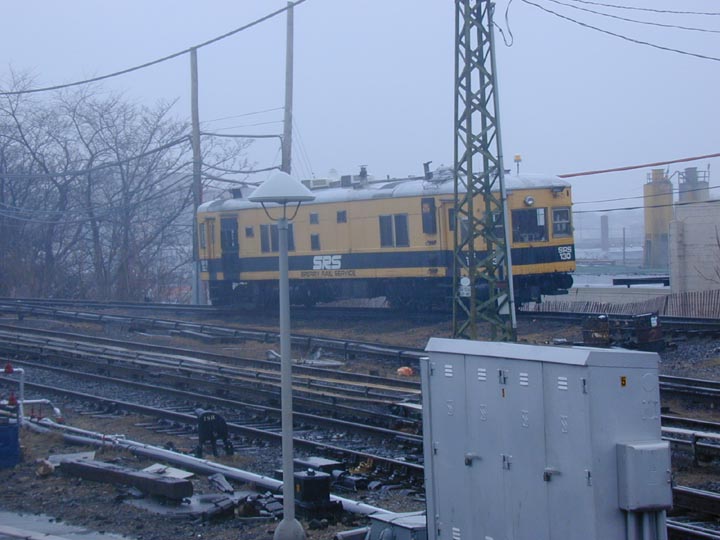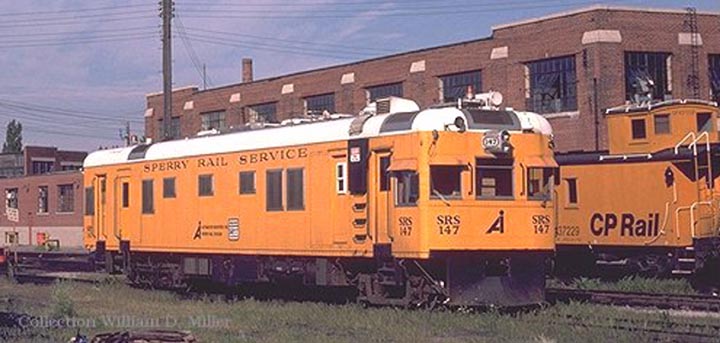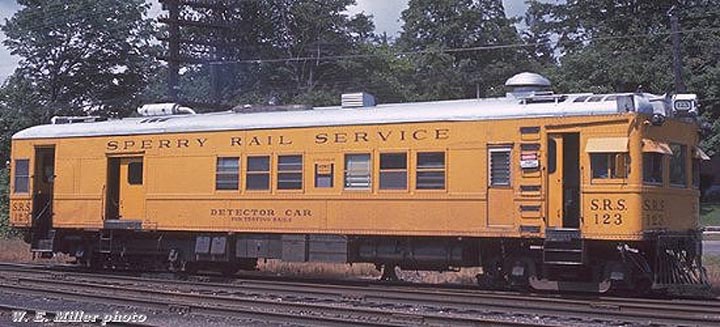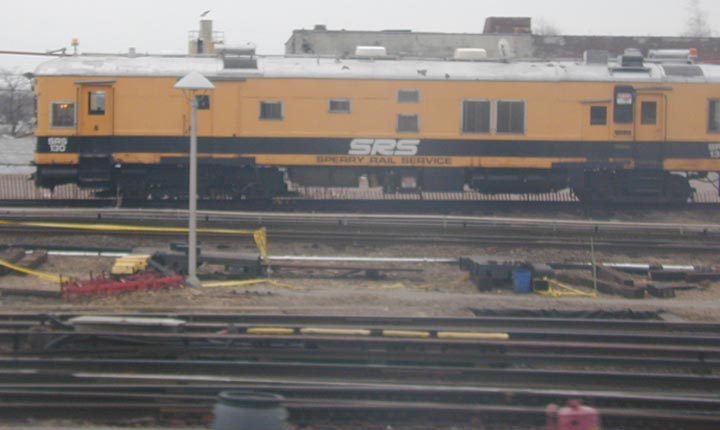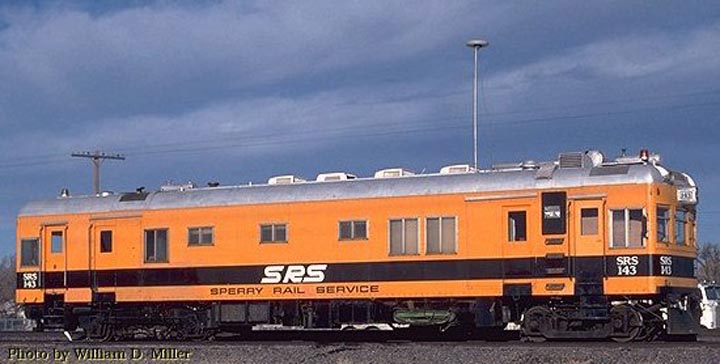The Longest Day-Part 4
By Bob Mintz
The last time that we detrained, I asked about the origins of the strange looking self-propelled unit
I went to someone more with more expertise in the field than I, and he gratefully gave me permission to reprint his fine article here.

A HISTORY OF SPERRY RAIL
By William E. Miller
[email protected]
(Reprinted with permission)
Dr. Elmer A. Sperry invented the rail flaw detector car. Born October 12, 1860 in Cortland, NY, Dr. Sperry passed away June 16, 1930. In his lifetime, he founded eight manufacturing companies and took out over 400 patents. Having a keen interest in machinery and electricity from an early age, Sperry developed dynamos and arc lamps. He established Sperry Electric Mining Machine Company in 1888 to manufacture electric rotary and chain undercutting machines he had invented for the mining industry.
In 1890, Sperry began to apply his vast knowledge and skills to transportation. First he designed an electric industrial locomotive and motor transmission machinery for streetcars, founding the Sperry Electric Railway Company in Cleveland, Ohio. He soon sold this to the General Electric Company. In 1894 he turned his interest to the building of electric automobiles powered by his patented storage battery.
Sperry’s greatest invention was the gyrocompass. He set up his Sperry Gyroscope Company in Brooklyn, NY, in 1910. He extended the gyro principal to the guidance of torpedoes, gyropilots for steering ships and for stabilizing airplanes.
To railways and railfans, the name Sperry is more likely to be associated with the Sperry Rail Detector car. Early efforts in the late 1800’s to develop a rail defect-detecting device had proved unsuccessful while serious train derailments, blamed on transverse fissures, were on the increase. In addition to previous derailments, one occurred in Manchester, New York, in 1911, killing 29 and seriously injuring 60, while another killed 21 and injured over 100 near Victoria, Mississippi in October 1925. It was apparent that a dependable rail inspection device was needed.
In 1923, Dr. Sperry began work on developing a method of locating internal rail defects. In 1927, he contracted with the American Railway Association to build a rail test car. Construction on this first car, numbered 101, began in June 1927. It consisted of a metal-faced plywood body mounted on a Kalamazoo motorcar bed, which was in turn towed by a larger motorcar. Following completion, it was delivered December 17, 1927 for testing.
An operator, laying flat on his stomach, held a “search unit” against the rail as he was moved along on a handcar. Fissures were found during the tests, but serious difficulties were also encountered. This method also had problems due to uneven rail surfaces.
Dr. Sperry and his staff worked around the clock for several months, until in 1928, they discovered a new principal for detecting transverse fissures, the “induction method”. In addition to detecting transverse fissures, the induction method also found split-heads and other invisible defects. This system was used until 1960 when semi-automated ultra-sonic equipment was added to the Sperry fleet.
Ultra-sonic rail testing was first offered in 1949, equipment being mounted on a motorcar, with hand held inspection made at each joint.
It would appear that equipment based on the induction method replaced the original magnetic equipment on 101. Although it had been completed almost ten months earlier, the car was not accepted by the Rail Committee until October 2, 1928 following a test run on September 27, 1928 by Dr. Sperry and H.C. Drake, his research engineer. It soon began testing on the New York Central under the supervision of the ARA. So successful was the test with the modified 101 that construction on SRS 102 was begun almost immediately.
Dr. Sperry’s original plan had been to build and sell the rail detector cars to the railways, as well as selling the testing service. However, the railways were reluctant to purchase the cars outright so Sperry decided not to sell the cars but rather the service only. In this way, testing would be consistent, as it would be done by skilled, experienced, personnel.
To market the testing service, Sperry Rail Service Corporation was created. The first commercial testing was done in November 1928, on the Wabash Railway over a 130-mile section of track between Montpelier, Ohio and Clarke Junction, Indiana, with SRS 102.
The service soon spread and Sperry put two more cars into operation. At the beginning of 1930 four cars were in service. By the end of that same year, the fleet had increased to ten cars.
The fleet continued to expand, as did the area served. In addition to providing service to U.S. railroads, the Sperry rail cars also traveled to Canada, Mexico, and even overseas. Smaller railways could not justify the expense of having their own rail detector car, which would see limited use, unlike the New York Central and the Union Pacific who did own such cars. Many Sperry cars were created by rebuilding existing railway cars, in particular, “Doodlebugs”. In most cases, the rebuilt cars bore little resemblance to the original.

